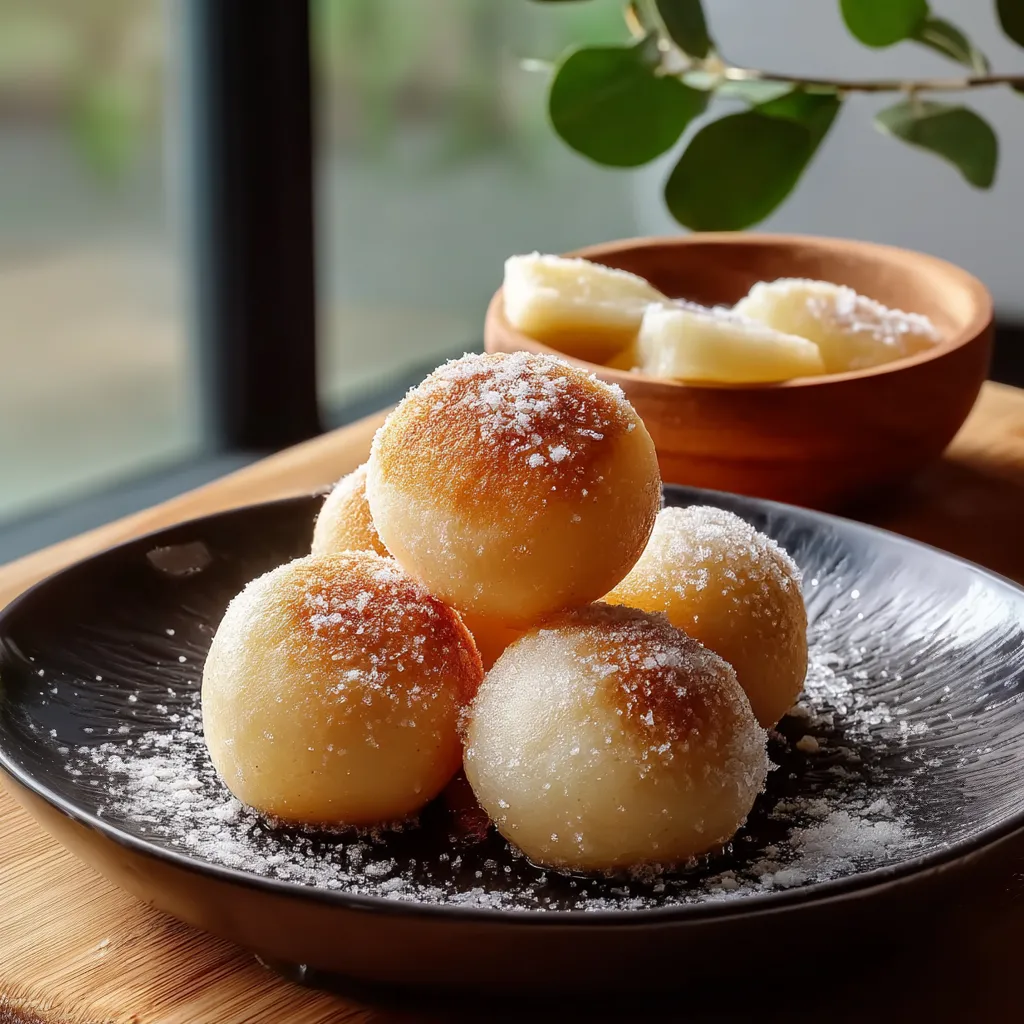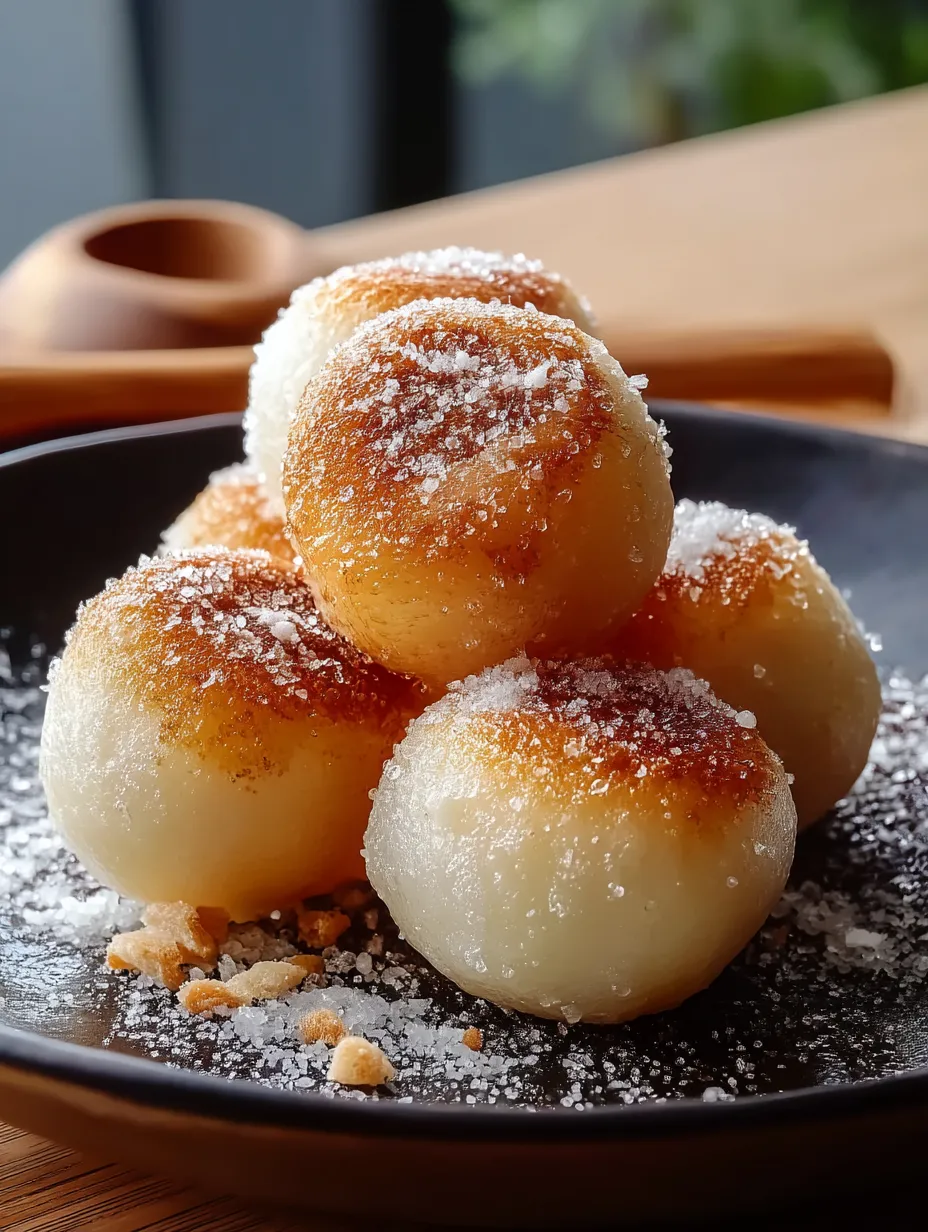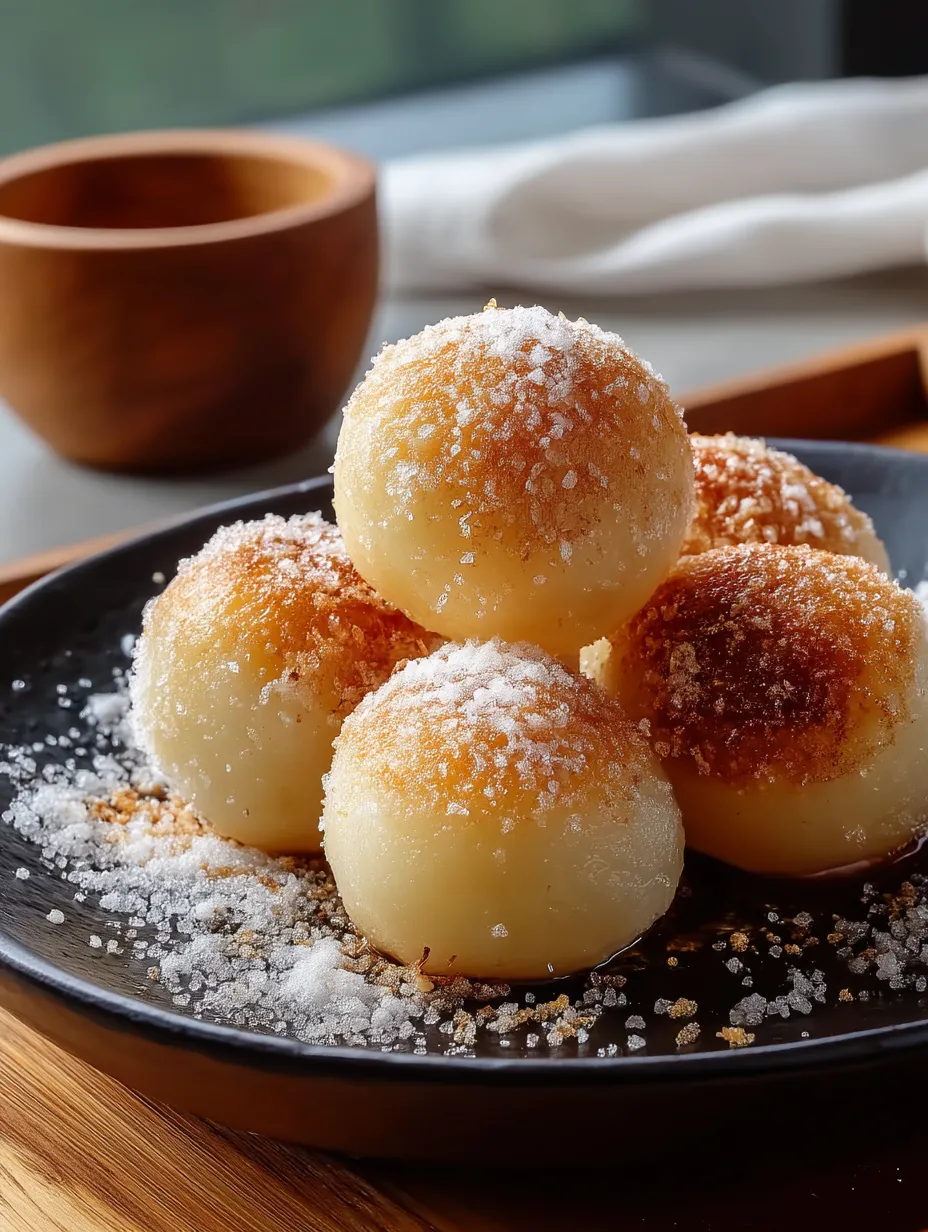 Pin it
Pin it
This filling Potato Mochi Treat blends smooth, velvety mashed spuds with the distinctive bounce of classic mochi. This mix creates a one-of-a-kind nibble or starter that connects different food traditions and tastes with every mouthful.
I came across this idea while playing around with fusion cooking and was blown away by how ordinary potatoes could turn into something with such a unique texture. The first time I brought these out for my family, they vanished in seconds with everyone begging to know how I made them.
Ingredients
- Potatoes: Mid-sized, skinned and chopped into pieces form the substantial foundation and bring that familiar comfort food quality
- Glutinous rice flour: Key for getting that trademark stretchy mochi consistency, you'll find this in Asian grocery aisles
- Water: Pulls everything together for just the right texture
- Sugar: Evens out the taste with a touch of sweetness
- Soy sauce: Gives rich savory depth that works beautifully with the potato base
- Oil for frying: Go with vegetable or canola for their plain taste and ability to handle high heat
- Optional toppings: Sesame seeds and chopped scallions bring color, crunch and flavor contrast
Step-by-Step Instructions
- Get your potatoes ready:
- Cook potato chunks in well-salted water for 15-20 minutes until they're soft when poked with a fork. Drain them completely and mash until they're totally smooth with no lumpy bits for the best results.
- Mix your dough:
- Put your smooth potato mash in a big bowl with the glutinous rice flour, water, and sugar. Work it with your hands until it feels stretchy and uniform, roughly 3-4 minutes. The mix should be a bit sticky but still hold together when shaped.
- Shape your mochi pieces:
- Split the dough into walnut-sized chunks, using slightly damp hands to stop sticking. Gently press each ball down to about half an inch thick, making sure they stay plump enough to keep their chewiness.
- Fry until golden:
- Warm oil to 350°F in a sturdy pot. Working with small groups, carefully drop the flattened dough bits into the hot oil, leaving room between them to grow. Cook until golden on one side, about 2-3 minutes, then flip and cook another 2 minutes.
- Finish and flavor:
- Move the fried mochi to paper towels to soak up extra oil. While they're still warm, drizzle some soy sauce over them and sprinkle your favorite toppings for the best flavor.
 Pin it
Pin it
What I love most about making these is watching plain old potatoes turn into something totally unexpected. The first time I bit into a fresh-made one, I couldn't get over how the crispy outside gave way to that bouncy center, a mix of textures that really makes this snack stand out.
Storage Tips
These potato treats taste best right after frying when they're crispy outside and perfectly chewy inside. But if you need to save some, let them cool down fully and then put them in a sealed container with parchment paper between layers. They'll stay good in the fridge for up to 3 days.
To warm them up, just pop them in a 350°F oven for 5-7 minutes until hot, or quickly fry them again for about 30 seconds per side to bring back some crispiness. Don't use the microwave as it'll make them hard and rubbery.
 Pin it
Pin it
Variations To Try
What's great about potato mochi is how easily you can change it up. Try mixing in some minced garlic or ginger to the dough for extra aroma. Adding a spoonful of finely cut herbs like chives or parsley can lift the flavor profile. For a cheesy version, stir in a quarter cup of grated parmesan or cheddar before shaping the balls.
If you want some heat, mix in a teaspoon of gochujang (Korean hot pepper paste) or wasabi with the dough. All these changes keep the signature bounce while letting you tailor the taste to match your main dish.
Cultural Context
Potato mochi shows what happens when Eastern and Western food traditions come together. Original Japanese mochi is usually made from pounded sticky rice and has been a part of celebrations and everyday snacking for hundreds of years. This potato take brings in Western comfort food while keeping the stretchy texture that makes mochi so popular.
This twist shows how food grows when cultures mix, making new traditions that honor different cooking backgrounds. The potato version carries the warmth of familiar potato dishes while bringing in the unique bouncy experience that makes Japanese mochi so special.
Frequently Asked Questions
- → Which potatoes give the best results?
Potatoes that are starchy, like Yukon Gold or Russets, are the best options since they create a smooth, creamy mash for the mochi.
- → Is this dish naturally gluten-free?
Yes, as long as you make sure both the glutinous rice flour and soy sauce are certified gluten-free.
- → What’s the best way to save leftovers?
Keep any extras in an airtight container in the fridge and finish them within 3 days. Reheat in a skillet or toaster oven for a crispy texture.
- → What are some fun twists I can try?
Make it sweeter by mixing in mashed sweet potatoes, or kick up the flavor with chili flakes or garlic powder.
- → What’s the right oil for frying?
Stick to high smoke point oils like canola or vegetable oil. These won’t burn and will fry your mochi to a perfect golden color.
